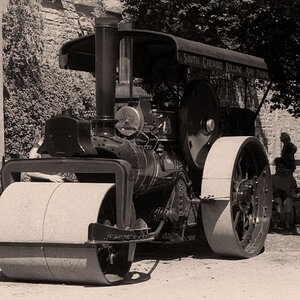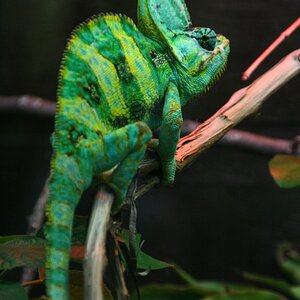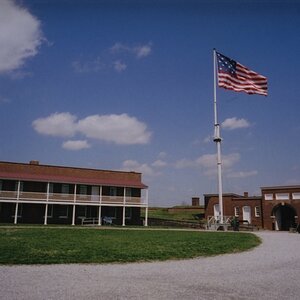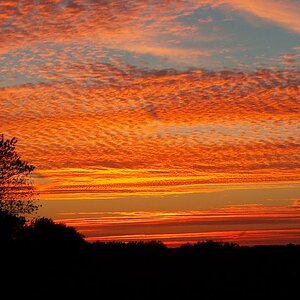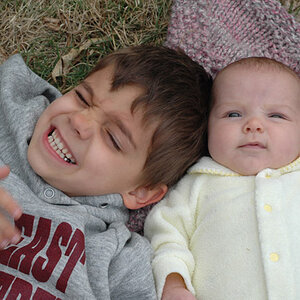I recently moved from d7000 to d600 and mostly shoot with either my 50mm 1.8d or 85 1.8d. Most shots are candid/portraits of a 4 year old at play.
When I have low light I am mostly shooting at f1.8 or f2. What I am having deciding is how lower I should take shutter speed vs cranking iso.
I was often letting the shutter get to 1/80 of a second before more heavly raising iso. But the more I play with the d600 I think I should be pusing higher on iso sooner vs letting shutter speed get that low.
I am interested in where people bottom out there shutter speed and what they feel is a safe iso they can go to. I am currently shooting a d600 with 50mm 1.8 and 85mm 1.8.
Of course in a room where i am shooting candids light chages rapidly. I am wondering more from a work flow standpoint how people make their decisions then actual settings.
This is my decision making process..
In a room with generally low light where i am shooting candids my work flow seems to be
1)set f-stop to 1.8 or 2
2)see what kind of iso I need to support shutter1/80 or 1/125.
3)if light is varies a lot in room I might move iso up to 800 on my old d7000. I considered this my 'safe iso'
4)see if that is enough to keep shutter speed up take the first few shots.
5)push iso beyond safe iso, if needed
Would love to know how others make their decisions when making sacrifices in low light.
Those with D600s do you have a iso that you consider a safe-iso that you quickly go to in low light?
Is 1/80 a second too slow for a 85 mm when taking photos of kids that are sitting and playing?
When I have low light I am mostly shooting at f1.8 or f2. What I am having deciding is how lower I should take shutter speed vs cranking iso.
I was often letting the shutter get to 1/80 of a second before more heavly raising iso. But the more I play with the d600 I think I should be pusing higher on iso sooner vs letting shutter speed get that low.
I am interested in where people bottom out there shutter speed and what they feel is a safe iso they can go to. I am currently shooting a d600 with 50mm 1.8 and 85mm 1.8.
Of course in a room where i am shooting candids light chages rapidly. I am wondering more from a work flow standpoint how people make their decisions then actual settings.
This is my decision making process..
In a room with generally low light where i am shooting candids my work flow seems to be
1)set f-stop to 1.8 or 2
2)see what kind of iso I need to support shutter1/80 or 1/125.
3)if light is varies a lot in room I might move iso up to 800 on my old d7000. I considered this my 'safe iso'
4)see if that is enough to keep shutter speed up take the first few shots.
5)push iso beyond safe iso, if needed
Would love to know how others make their decisions when making sacrifices in low light.
Those with D600s do you have a iso that you consider a safe-iso that you quickly go to in low light?
Is 1/80 a second too slow for a 85 mm when taking photos of kids that are sitting and playing?


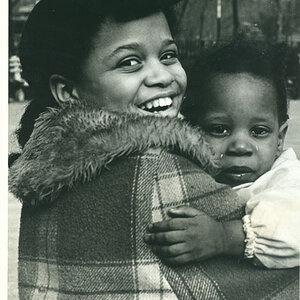

![[No title]](/data/xfmg/thumbnail/42/42274-5bec1b32caba5fed4a680bc5be4d0202.jpg?1619740083)
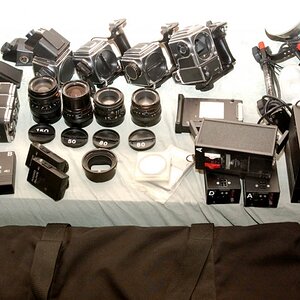
![[No title]](/data/xfmg/thumbnail/41/41921-10ae2355bbcea545815ebd932ee145a7.jpg?1619739944)
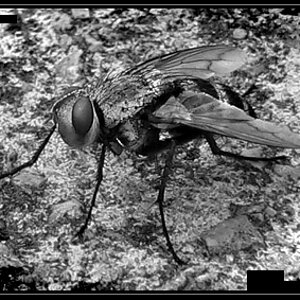
![[No title]](/data/xfmg/thumbnail/41/41923-ddfdc5596c5073ae69761e32124481cf.jpg?1619739945)
